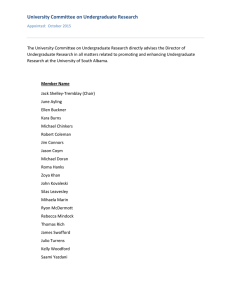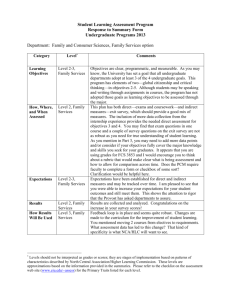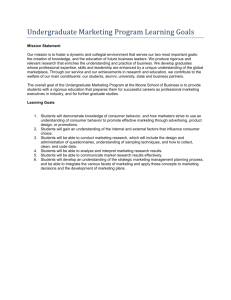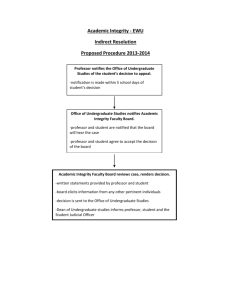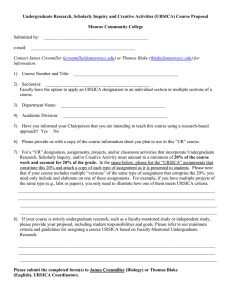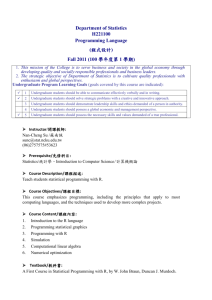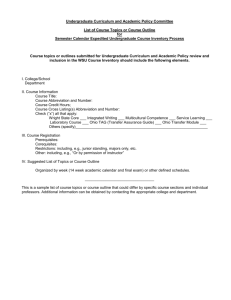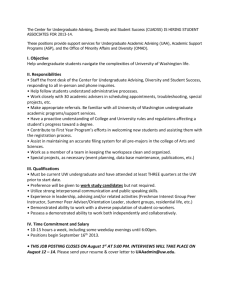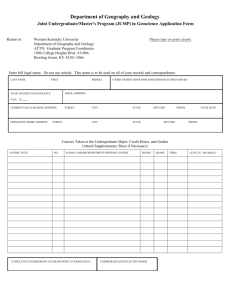Student Learning Assessment Program
advertisement
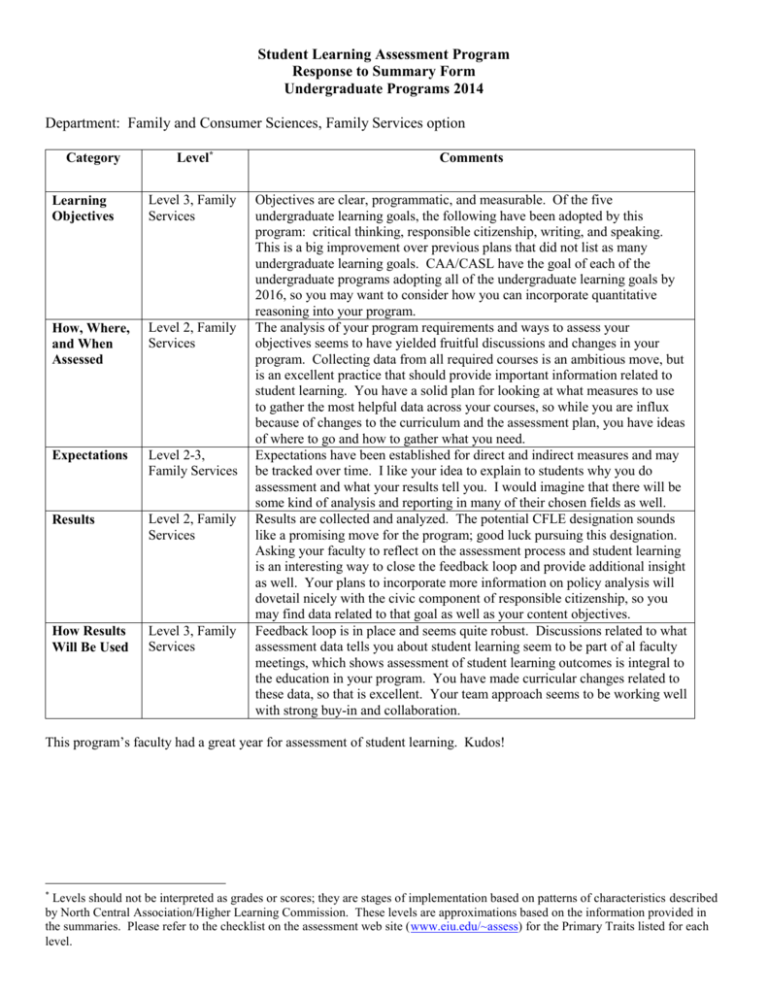
Student Learning Assessment Program Response to Summary Form Undergraduate Programs 2014 Department: Family and Consumer Sciences, Family Services option Level* Comments Learning Objectives Level 3, Family Services How, Where, and When Assessed Level 2, Family Services Expectations Level 2-3, Family Services Results Level 2, Family Services How Results Will Be Used Level 3, Family Services Objectives are clear, programmatic, and measurable. Of the five undergraduate learning goals, the following have been adopted by this program: critical thinking, responsible citizenship, writing, and speaking. This is a big improvement over previous plans that did not list as many undergraduate learning goals. CAA/CASL have the goal of each of the undergraduate programs adopting all of the undergraduate learning goals by 2016, so you may want to consider how you can incorporate quantitative reasoning into your program. The analysis of your program requirements and ways to assess your objectives seems to have yielded fruitful discussions and changes in your program. Collecting data from all required courses is an ambitious move, but is an excellent practice that should provide important information related to student learning. You have a solid plan for looking at what measures to use to gather the most helpful data across your courses, so while you are influx because of changes to the curriculum and the assessment plan, you have ideas of where to go and how to gather what you need. Expectations have been established for direct and indirect measures and may be tracked over time. I like your idea to explain to students why you do assessment and what your results tell you. I would imagine that there will be some kind of analysis and reporting in many of their chosen fields as well. Results are collected and analyzed. The potential CFLE designation sounds like a promising move for the program; good luck pursuing this designation. Asking your faculty to reflect on the assessment process and student learning is an interesting way to close the feedback loop and provide additional insight as well. Your plans to incorporate more information on policy analysis will dovetail nicely with the civic component of responsible citizenship, so you may find data related to that goal as well as your content objectives. Feedback loop is in place and seems quite robust. Discussions related to what assessment data tells you about student learning seem to be part of al faculty meetings, which shows assessment of student learning outcomes is integral to the education in your program. You have made curricular changes related to these data, so that is excellent. Your team approach seems to be working well with strong buy-in and collaboration. Category This program’s faculty had a great year for assessment of student learning. Kudos! * Levels should not be interpreted as grades or scores; they are stages of implementation based on patterns of characteristics described by North Central Association/Higher Learning Commission. These levels are approximations based on the information provided in the summaries. Please refer to the checklist on the assessment web site (www.eiu.edu/~assess) for the Primary Traits listed for each level.


